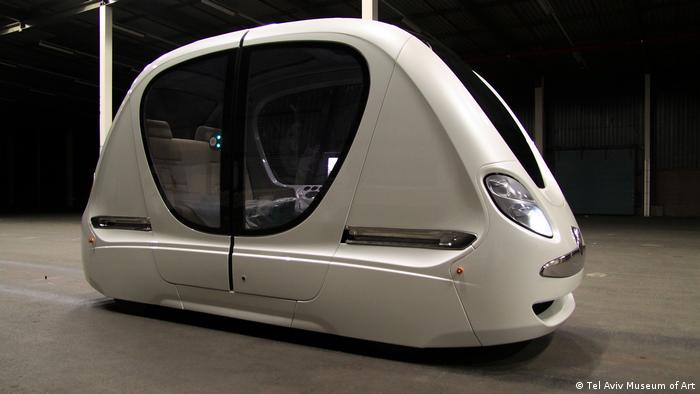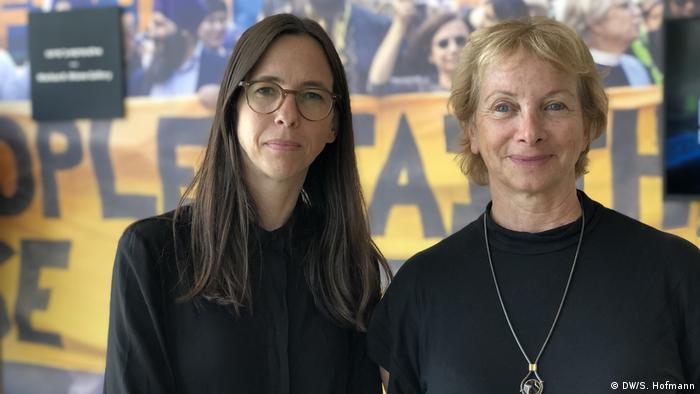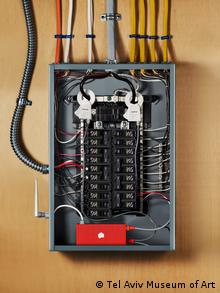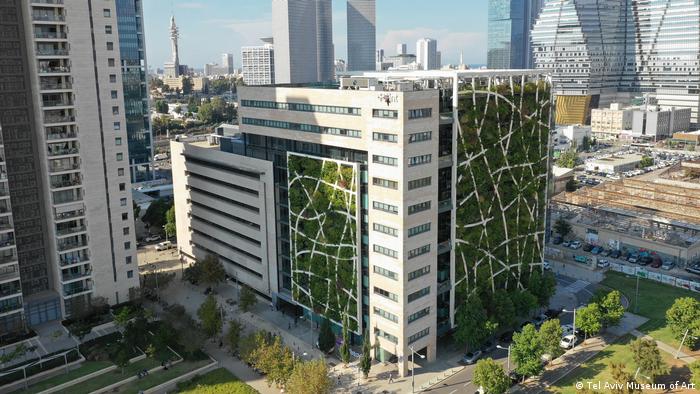Worldwide, young people are demanding to “Fridays for our Future,” a new climate policy. An exhibition in Tel Aviv, shows that The future lies in the cities. With the innovative architecture of the climate change, curb.

Climate-neutral city planning: The Madar-Personal Rapid Transit (developed in GB for the United Arab Emirates)
The hot desert wind Scharav is just swept over Tel Aviv away. In Israel he has provided once again for the extreme record-breaking temperatures. Just under 50 degrees were measured at the dead sea.
In the Tel Aviv Museum of Art, however, it is pleasantly cool. The air-conditioning systems – not only here, but throughout the city – is well underway. With a cool head, you can look at a set of colorful stripes that look only at the first glance as art: From left to right, more and more orange and finally red from blue stripes.
They show how the climate since the middle of the 19th century. Century has changed. Not just in Israel or the Middle East. In Germany, for example, the annual average temperature rose by 6.6 degrees (dark blue) to 10.3 degrees Celsius (dark Red). It is a graphic of the blog “Climate Lab Book”, the data comes from the World metereological Organization (WMO).
Combative Culture-Embassy
The Tel Aviv Museum of Art shows the heat strip as part of its current exhibition “Solar guerrilla. Constructive responses to climate change” (original title: the Solar guerrilla. Constructive Responses to climate change). The colorful and aesthetic looking graphics compared to layers of rock, the progressing climate change are posed: Yes, the temperature rose quite often in the history of mankind, and cooled down in the meantime too. But over millions of years, not decades as it is now.

Curator Maya Vinitsky, Tel Aviv Museum (li) with environmental researcher Orli Ronen Rotem from Tel Aviv University
“There are two basic statements of this exhibition”, says the climate expert Orli Ronen of the Tel Aviv University, who has advised as an environmental researcher in the Team of the Museum. “One is: There is climate change. He is drastically. And it is man-made. And the other is: We can do something. We can’t stop climate change, but there are solutions to slow him down, at least.”
“Stand up for the climate!!”
The exhibition comes with a combative message, therefore, is at the entrance prior to the actual exhibition hall significantly. A Collage shows people demonstrating. “We are drowning. We are fighting” on their signs (“We are drowning, we are fighting”), “Rise for climate” (“stand up for the climate”) or just “Wake up” (“Wake up”). It images, which has called for the young Swedish climate activist Greta Thunberg, the school strikes “Fridays for Future” to life are, to see frequently in the news worldwide. Images and messages that change the climate policy.
The theme of the exhibition is in the current Trend. “It is true, we, too, are in this case, as an exhibition-maker kind of activists,” says curator Maya Vinitsky in an interview with DW. “But in a very restrained manner.” The Collage of the protesters wants you to know as a sort of gateway into the world of constructive ideas on the topic of climate change is understood. “Many people Wake up in the morning and read in the newspaper one or the other on climate change. But you don’t know how they should react to it. We try to show in this exhibition: There are ways. To go on the road and to demonstrate one of many Paths only.”
Clean drinking water from air

Green technology in the art Museum: power control module “Sense, Energy Monitor”
Since the simple energy is, for example, measurement device called “Sense”, indicating via the App, how much power each individual device consumes in a household. Just in the current box at home is appropriate, it could lead to the hope of the developer to rethink what device really needs to run constantly and what may also turn off times.
And since the company is Watergen, which has managed to develop a machine that removes the air moisture, these filters, and drinking water makes. The blue box, the stands in the exhibition hall, is to be used, especially in Africa.
Or the so-called PodCar, which is powered by Lithium-phosphate batteries, which are charged via solar energy. Since 2010, it is in Masdar City, a modern city construction project in the United Arab Emirates in operation.
The Danish king Willem-Alexander, Ban Ki-Moon, Angela Merkel and Narendra modi as a state guest in the Emirates with the car, it was like out of a Science Fiction movie. The Plan of the sheikhs: The entire city is meant to serve as an Eco-model for the future, and in the midst of the Oil-rich become Emirates completely without fossil fuels do.
Trees and batteries
And since the cities are represented in the exhibition, the try in the form of innovative solutions. Of Chicago, whose municipal government has now funded the planting of more than a thousand high-rise rooftops, on vertical gardens along the facades of the buildings in Singapore to Tel Aviv – the place in Israel, the exhibition will be presented.
In the old Arab city of Jaffa, now part of the city of Tel Aviv, is obtained from wave power clean energy. “Eco Wave Power” is the name of the Israeli technology, which was also in Gibraltar in 2016 for use.
The Israeli project “ElectReon” is still in the testing phase in Sweden, but in the future, to travel in the Tel Aviv buses, which are, as yet, for 70 percent of the smog of the city, with electric batteries. Operated with batteries that recharge themselves on a permanent self again, without the cable connected with underground electric roads.

Climate-neutral city planning: The “Check Point Building” in Tel Aviv
In the North of the city of Tel Aviv, a new residential area is to be completely climate-neutral way. The power to work alone from solar energy, food, heat, and cooling of the building separately from the electricity through a minimal use of natural gas. A vision of the future also for other cities.
Turning point of the story
It is mainly architects and designers who are in this exhibition at the top. So you can also explain what makes an exhibition of climate technology in an art Museum: The Tel Aviv Museum of Art has a large Department of architecture and Design.
But there is another explanation: “let’s Be honest,” says the environmental researcher Ori Ronen, “we as scientists have failed. Climate change is the defining topic of conversation of the people sitting in the cafes. I am happy to change on every attempt so and the Museum is a place where people are open for new impulses.
“I don’t think anyone can go through this exhibition and not feel that he or she should immediately do something about it.” Finally, the exhibition will show how crucial the development is currently, is Ronen to keep in mind: “We are at a watershed of history.”
“Basically, I’m an optimist,” says curator Vinitsky in the DW-Interview. “I am optimistic, when I look at what can be achieved by technology, which can create people. We begin the exhibition with the activists, with those who apply a kind of guerilla tactic against a global policy, which does not yet enough. As regards the political level, I am so very skeptical. But, what remains to us other than to try it?”

